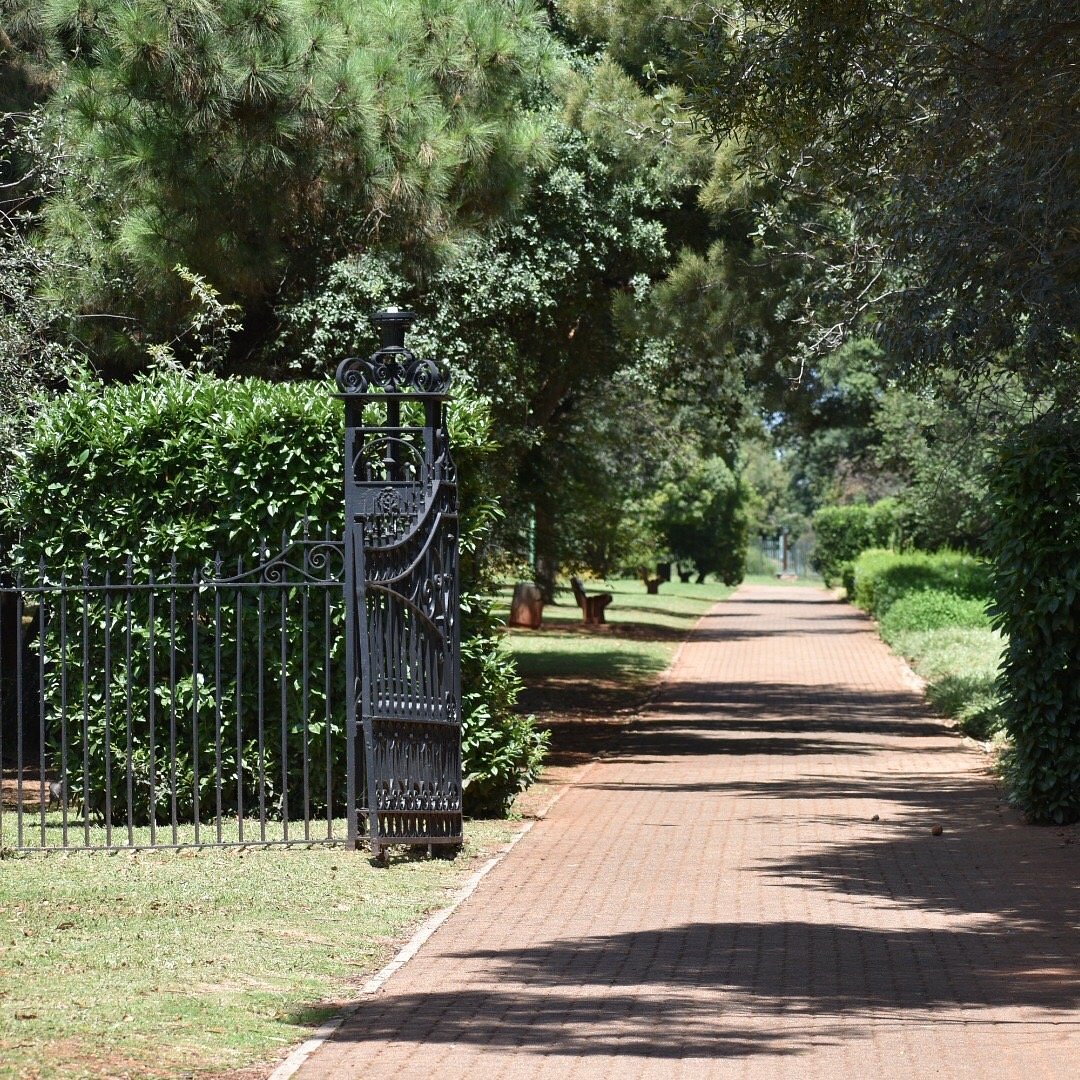Welcome to Johannesburg, a city bursting with a rich history, vibrant culture, and an unmistakable spirit of resilience and transformation. Known as the “City of Gold” because of its roots in the gold and diamond trade, Johannesburg is the largest city in South Africa and a booming economic hub.
From poignant historical sites to thriving urban precincts, this article guides you through some of the best places that Jozi, as locals affectionately call it, has to offer.
Apartheid Museum
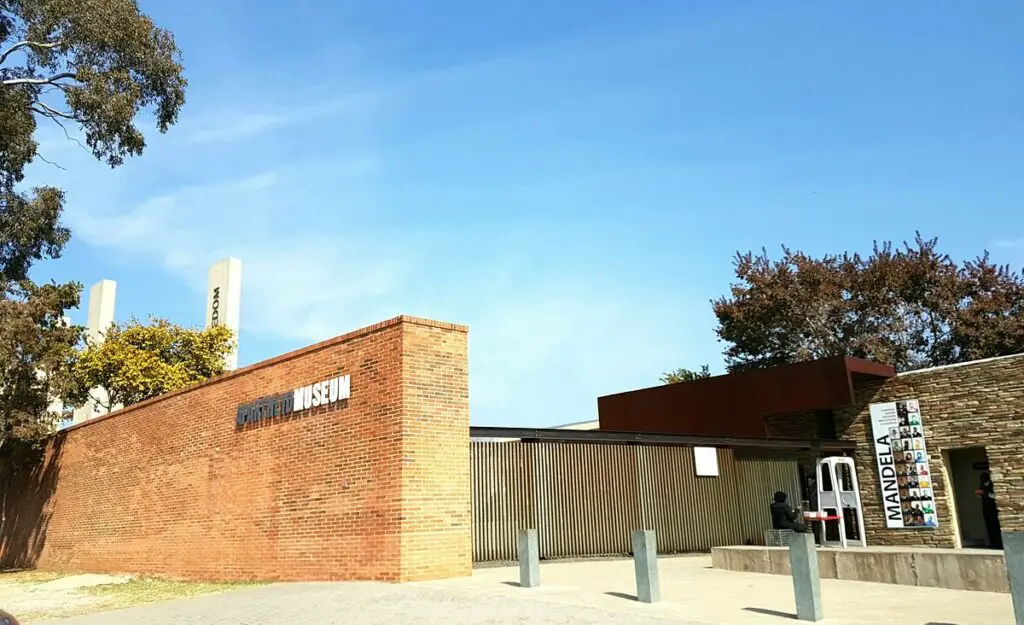
The Apartheid Museum, located in Johannesburg, South Africa, stands as a powerful reminder and comprehensive account of the country’s era of apartheid, a period characterized by systematic racial discrimination. The museum was opened in 2001 and it offers an unparalleled journey into the heart of South Africa’s apartheid past, making it a must-visit site for any visitor to Johannesburg.
Upon entering the museum, visitors are assigned a racial category, emphasizing the arbitrary nature of racial classification under apartheid. As you move through the exhibits, you experience the profound and emotional journey from the dark days of segregation to the country’s first democratic elections in 1994.
The museum covers a vast chronological sweep, presenting the history and politics of apartheid through varied and powerful exhibits that include personal testimonies, photographs, film footage, and historical documents. Key exhibits include a series on the life and works of Nelson Mandela, the struggle for freedom during the 1970s and 1980s, and the eventual fall of apartheid.
One of the most emotionally powerful sections of the museum is the installation called “The Hall of Names,” which is dedicated to those who were killed during the apartheid era. The room is filled with hanging wooden slabs, each one inscribed with the name of a victim. This poignant exhibit is a stark reminder of the human cost of apartheid.
The Apartheid Museum is not just a collection of exhibits but a journey that elicits a visceral, emotional response. It provides a deep understanding of the devastating effects of apartheid on the country’s history and its people, while also serving as a beacon of how far the country has come in its quest for racial equality and social justice.
The Apartheid Museum is an essential visit for anyone seeking to understand the complexities of South Africa’s past and its ongoing journey to reconciliation and nation-building. It stands as a testimony to the triumph of the human spirit over adversity.
Constitution Hill
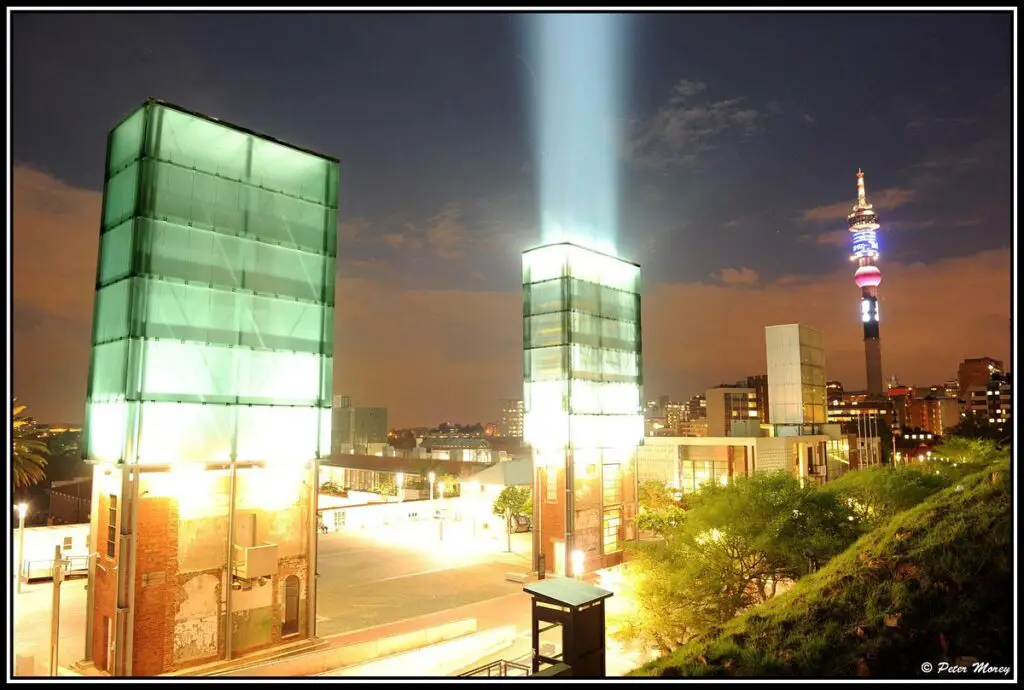
Constitution Hill is an iconic landmark that holds a profound significance in South Africa’s history. It is located in Johannesburg and presents a unique perspective of South Africa’s journey to democracy.
The site itself has served numerous functions over the years and is a potent symbol of South Africa’s historical struggle for democracy. It was once a fort, a place of detention, a site of struggle during the apartheid era, and is now home to the Constitutional Court, representing the nation’s democratic future.
The Old Fort, built as a prison in the late 19th century, was initially a military defense post against British invasion during the South African War. Over the years, the complex grew and included additional sections like the Women’s Jail and the Native’s Jail.
The Constitution Hill complex has detained thousands of people, enduring brutal conditions, including famous political activists such as Nelson Mandela, Mahatma Gandhi, Albertina Sisulu, and Winnie Madikizela-Mandela. Each of these individuals played a crucial role in the fight against apartheid, making Constitution Hill a symbol of resistance and the journey towards freedom.
Today, the prisons have been turned into museums, providing visitors with a poignant look at South Africa’s oppressive past. The numerous exhibits tell the stories of the inmates, the atrocious conditions, and the political upheaval of the time.
The centerpiece of Constitution Hill today is the Constitutional Court, which upholds the rights and values of the country’s transformative constitution. The court itself is a beautiful structure with large windows, symbolizing transparency, and is adorned with artworks reflecting the spirit of the South African people. It’s a living monument to South Africa’s commitment to social justice and human rights, adding an optimistic perspective to the otherwise heavy history of the site.
Guided tours are available, and visitors are encouraged to explore the grounds, the museums, and the court to fully appreciate the historical and cultural significance of this landmark. Constitution Hill serves as a reminder of the country’s oppressive past, the resilience of its people, and their commitment to a democratic and inclusive future.
Gold Reef City

Gold Reef City is a popular amusement park and one of Johannesburg’s top attractions, providing fun and entertainment for the whole family. Located on an old gold mine which was closed in 1971, the park is themed around the gold rush that took place in Johannesburg in the 19th century.
Gold Reef City offers a multitude of thrilling rides and attractions suitable for all ages. From the adrenaline-pumping Tower of Terror and Anaconda roller coasters to the gentler rides for younger children, there’s something for everyone. The park also boasts a 4D theatre, a large wheel offering panoramic views of Johannesburg, and a multitude of funfair games.
Given its location on a former gold mine, one of the highlights of Gold Reef City is the opportunity to descend into a recreated mine shaft, descending 75m below the surface, to learn about the history and process of gold mining. You’ll be guided by former gold miners who will share insights about the conditions faced by miners, the machinery used, and you’ll even witness a live gold pouring demonstration.
For adults, the Gold Reef City Casino offers a chance to test your luck. It has a wide range of gaming options from slot machines to table games. The complex also includes a variety of restaurants, bars, and live shows, offering a comprehensive entertainment experience.
The Lyric Theatre located within Gold Reef City is renowned for its world-class productions ranging from musicals, dance shows to concerts. The opulent style of the theatre combined with its modern sound and lighting systems makes for an unforgettable theatrical experience.
The park also features historical attractions like the Apartheid Museum and several exhibits demonstrating life in Johannesburg during the gold rush era. The “Heritage Houses” exhibit showcases the architectural styles of the 19th century, and visitors can even watch traditional craftsmen practice their trades.
Gold Reef City offers a variety of dining options, from fast food outlets to fine dining restaurants. There are also several shops where you can buy souvenirs, crafts, and other goods.
Gold Reef City offers a blend of fun, thrill, and education, making it an excellent destination for both locals and tourists. With its rich history and exciting attractions, it truly is a unique amusement park that provides a comprehensive entertainment experience for people of all ages.
Johannesburg Botanical Garden
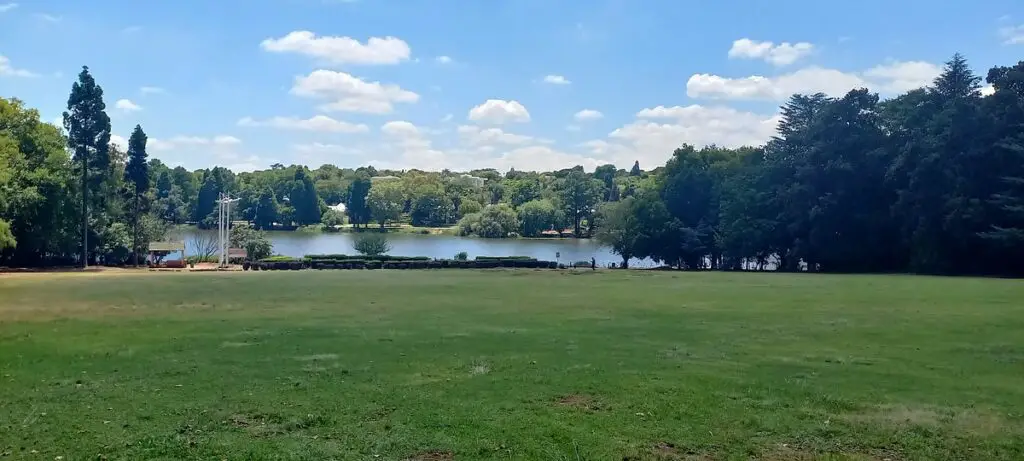
The Johannesburg Botanical Garden is an oasis nestled within the bustling city of Johannesburg, South Africa. Located in the suburb of Emmarentia, this 81-hectare garden provides a serene escape from the city noise and is one of the city’s beloved green spaces.
Established in 1964, the gardens were designed as a mix of formal and informal landscapes, providing a diverse range of plant and animal life. The garden is divided into several different sections, each displaying a unique collection of flora:
In addition to the gardens, the park is home to the Emmarentia Dam, which is a popular spot for water activities such as canoeing and sailing. The dam and its surroundings also provide habitat for a variety of bird species, making it a hotspot for birdwatchers.
The Johannesburg Botanical Garden is not only a place for relaxation and leisure activities but also plays an important role in plant conservation and education. It hosts various educational programs and workshops throughout the year focusing on botany and environmental conservation.
The park also provides venues for concerts and other cultural events. One of the most popular events is the “Music under the Trees” concert series, which attracts both local and international performers.
Whether you’re looking to enjoy a leisurely stroll amidst beautiful flora, engage in recreational activities, or simply enjoy a picnic by the dam, the Johannesburg Botanical Garden provides the perfect getaway within the city. It is a testament to Johannesburg’s commitment to preserving natural spaces and biodiversity, making it a must-visit destination for both residents and visitors.
Soweto & Mandela Museum
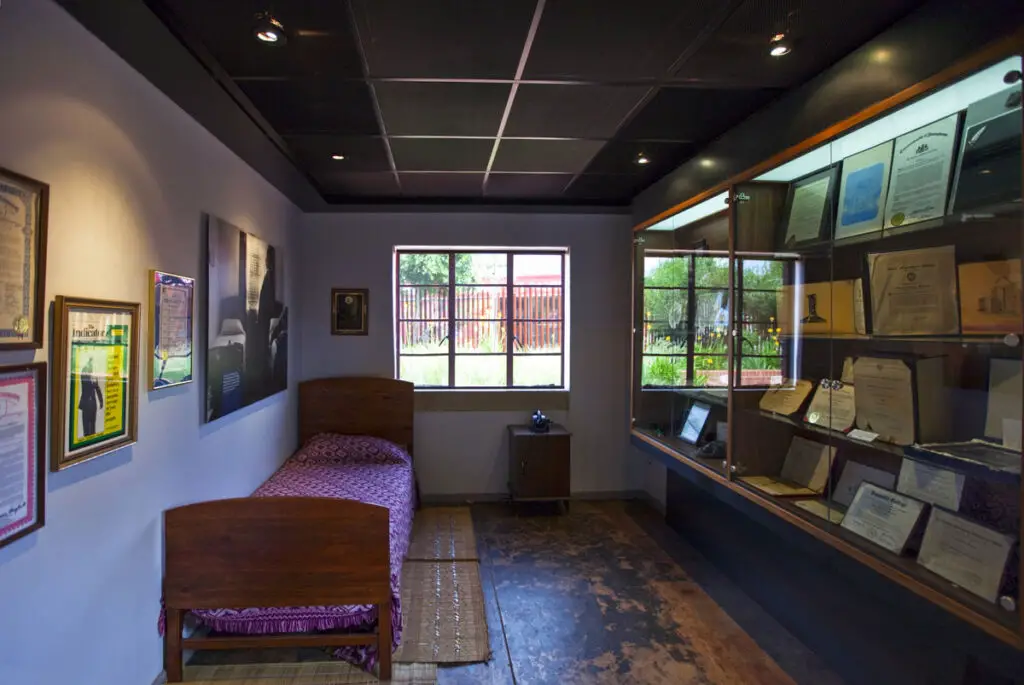
Soweto, an acronym for South Western Townships, is a sprawling urban area located 15 kilometers southwest of Johannesburg. This historical area is deeply linked with South Africa’s tumultuous past and was at the heart of the struggle against apartheid. It is the birthplace of several anti-apartheid activists, including two Nobel laureates, Nelson Mandela and Desmond Tutu, who both have houses on Vilakazi Street, the only street in the world to have housed two Nobel laureates.
The Mandela Museum, also known as the Nelson Mandela National Museum, is situated in Nelson Mandela’s former residence at 8115 Vilakazi Street, Soweto. This humble red-brick house was Mandela’s home from 1946 to 1962, before he was imprisoned for 27 years. Today, it stands as a museum dedicated to preserving the legacy of Mandela’s contribution to South Africa’s struggle for freedom.
The Mandela Museum offers a vivid glimpse into Mandela’s life during those years. A tour of the house provides insight into his family life, his political activism, and the 17 months he spent in hiding from the authorities. Many personal artifacts remain just as he left them, including his boxing gloves, traditional African artworks, and photographs that chronicle his life.
The museum showcases a comprehensive timeline of Mandela’s life, as well as the broader historical context of apartheid. A tour guide narrates the personal stories behind the exhibited items, including the bullet holes and scorch marks left by attacks against Mandela during the volatile years of apartheid.
Adjacent to the house is a modern visitor center, featuring multimedia displays, historical archives, and a comprehensive exhibition on Mandela’s life. The exhibition touches on his childhood, his fight against apartheid, his long imprisonment, and his presidency.
Mandela’s former home isn’t just a museum; it’s a place of pilgrimage that provides a deeply personal insight into a pivotal period in South African history. The stories, artifacts, and photos come together to provide a profound experience for visitors.
For anyone interested in the history of South Africa’s struggle for freedom, a visit to the Mandela Museum in Soweto is a must. It’s a potent reminder of the price paid for freedom and the strength of the human spirit in the face of injustice.
Maboneng Precinct

Maboneng Precinct is one of the most vibrant and trendsetting areas in Johannesburg, South Africa. Located on the eastern edge of the city, this regenerated district has transformed from an urban wasteland into a hub of creativity, art, culture, and entrepreneurship.
The word “Maboneng” translates to “place of light” in the Sotho language, a fitting name for a district that has brought new energy and light to Johannesburg’s urban landscape. The precinct’s transformation began in 2009 when a local developer saw potential in the neglected factories and warehouses and began to convert them into a community-focused urban neighborhood.
Here are the key features of Maboneng Precinct:
Maboneng is renowned as a hub for Johannesburg’s thriving arts scene. The district boasts several galleries and studios such as the Museum of African Design (MOAD), Arts on Main, and David Krut Projects. The area is also home to The Bioscope, an independent cinema that showcases local and international independent films.
It has a rich culinary scene with an array of restaurants, cafes, and food markets offering a variety of cuisines. Whether you’re in the mood for African fusion food, vegan eats, or artisanal coffee, you’ll find it in Maboneng. When the sun sets, the district comes alive with its vibrant nightlife, offering everything from rooftop bars to music venues.
The precinct features several unique retail spaces, from fashion boutiques showcasing local designers to craft markets like Market on Main, where artisans sell handmade jewelry, clothing, and homeware.
Maboneng Precinct is a testament to the power of urban regeneration and the potential that lies in repurposing industrial spaces for community use. This lively district is a must-visit for those seeking to explore the creative heart of Johannesburg. With its rich culture, artistic spirit, and dynamic urban energy, Maboneng Precinct shines as a beacon of creativity and urban renewal.
Johannesburg Art Gallery
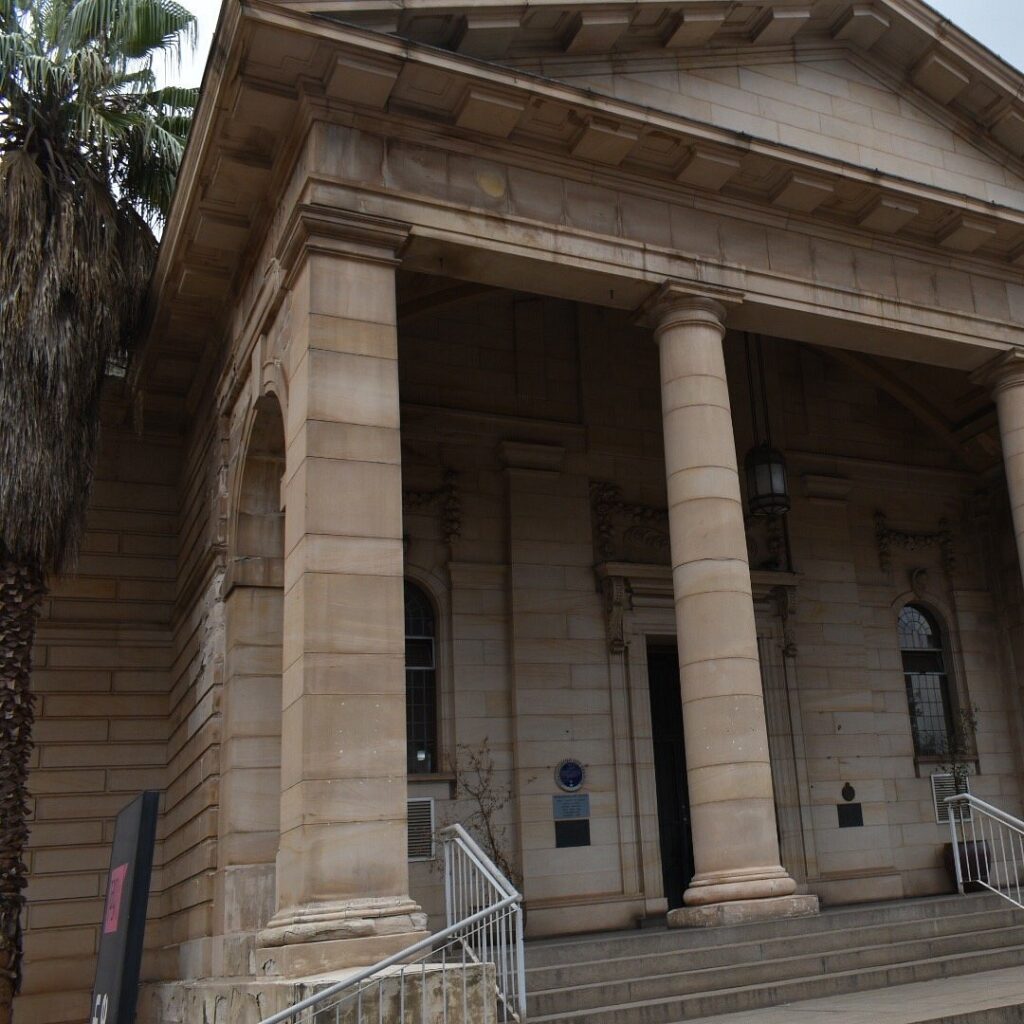
The Johannesburg Art Gallery, often referred to as JAG, is the biggest gallery on the sub-continent, with a collection that is larger than that of the South African National Art Gallery in Cape Town. Located in the vibrant neighborhood of Joubert Park, the gallery is an artistic oasis amidst the hustle and bustle of Johannesburg’s urban landscape.
The gallery was founded in 1910 and was made possible through a donation by Florence Phillips, the wife of a former mining magnate. Designed by British architect Sir Edwin Lutyens, the building combines elements of Roman, Edwardian, and colonial architecture. Its sprawling floor space, complete with 15 exhibition halls and beautiful sculpture gardens, makes it an ideal setting for art displays.
JAG houses an impressive collection of over 9,000 works, offering a comprehensive view of South African and European art from the 15th century to the present. This includes works by South African artists such as Gerard Sekoto, Walter Battiss, and Irma Stern, as well as European masters like Auguste Rodin, Dante Gabriel Rossetti, and Pablo Picasso. In addition to its permanent collectio
n, the gallery also hosts temporary exhibitions, artist retrospectives, and traveling displays.
JAG’s collection of African art is particularly noteworthy, with works representing the diverse cultures of the African continent. These include historical pieces such as beadwork, sculpture, textiles, and pottery, as well as contemporary works of art.
The gallery is also home to an extensive collection of prints, which includes work from South Africa, other African countries, and the rest of the world. This collection is a result of Florence Phillips’ vision to make art accessible to everyone, regardless of their social or economic status.
JAG isn’t just about showcasing art; it’s also about promoting art education and encouraging public participation in the arts. It offers educational programs, workshops, and art classes for both children and adults. The gallery also hosts several community outreach programs designed to foster a love for the arts among Johannesburg’s residents.
Visiting the Johannesburg Art Gallery is a feast for the eyes and the soul. It’s a place where one can explore the richness of South Africa’s artistic heritage, appreciate the creative expressions of African artists, and gain a deeper understanding of the country’s complex history. Whether you’re an art aficionado or a casual visitor, JAG offers a fulfilling artistic experience and a deeper insight into the diverse tapestry of South African culture.
Cradle of Human Kind

The Cradle of Humankind, located about 50 kilometers northwest of Johannesburg, South Africa, is a UNESCO World Heritage Site that has become world-renowned as a hub for paleoanthropological research. The site spans an area of approximately 180 square miles (466 square kilometers) and contains a complex of limestone caves, including the Sterkfontein Caves, where over a third of all hominid fossils ever discovered have been found.
The Cradle of Humankind is home to around 40% of the world’s known human ancestor fossils. The most famous of these is the Australopithecus africanus skull popularly known as “Mrs. Ples,” discovered in 1947, and the almost complete Australopithecus skeleton known as “Little Foot,” discovered in the 1990s. The fossils found here have shed light on the evolution of humans and our early ancestors, contributing significantly to our understanding of human history.
The Maropeng Visitor Centre is the official visitor centre of the Cradle of Humankind and is a key attraction within the site. The centre offers an interactive and educational journey of discovery that explores the development of humans over millions of years. Exhibits include original fossils, engaging displays about our ancestors, and an entertaining boat ride through the elemental forces – earth, air, fire, and water.
These caves are where many of the significant hominid fossils have been found, making them a popular attraction for visitors. Guided tours of the caves are offered, where you can learn about the archaeological research process and see the excavation site where “Little Foot” and “Mrs. Ples” were discovered.
Besides its historical and archaeological significance, the Cradle of Humankind is also home to a variety of wildlife and plant species. You can find antelopes, zebras, and over 200 species of birds in this area. The Rhino and Lion Nature Reserve within the Cradle offers the chance to see many of these animals up close.
Apart from the historical and scientific explorations, the Cradle of Humankind offers plenty of adventure activities for visitors. These include hot air ballooning, game drives, horse riding, and even quad biking.
Visiting the Cradle of Humankind is a unique opportunity to delve into the origins of humankind, set within a landscape teeming with natural beauty and wildlife. It’s a destination that’s as educational as it is awe-inspiring, and an absolute must-visit when in Johannesburg, South Africa.

